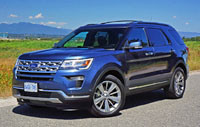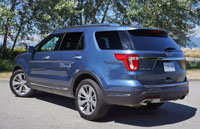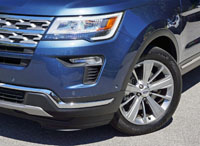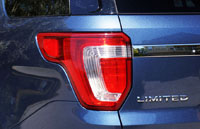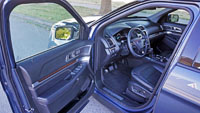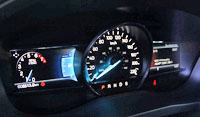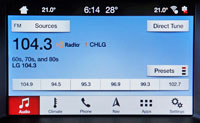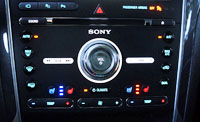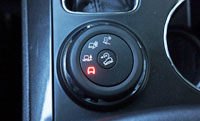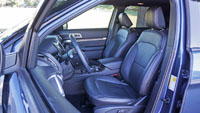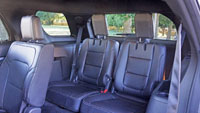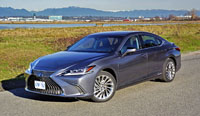
Model year 2019 marks three decades of Lexus ES availability, and while the car’s primary purpose hasn’t changed one iota, today’s seventh generation wouldn’t be recognizable by those who created the original.
The comparatively humble ES 250 was brought to market in 1989, and made no bones about its even more proletariat Toyota Camry roots. It was actually rushed to market so Lexus wouldn’t be a one-model brand, the full-size LS 400 making up the other half of the lineup. The ES, which was actually based on the Japanese market Camry Prominent/ Vista, was a good looking, well built, and fairly potent V6-powered mid-size luxury sedan, and thanks to that did reasonably well considering the all-new brand behind it.
Lexus has produced six ES generations since that first example, releasing this latest version last year for 2019, and while each new update improved upon its predecessor, this new model is by far the most dramatic to look at, most refined inside, and best to drive.
Lexus has done such a great job of pulling the ES upmarket, that it’s going to be a lot harder to justify having two mid-size sedans in its lineup. The two cars look pretty similar and are quite close in size, with the new ES’ wheelbase a mere 20 millimetres (0.8 inches) longer at 2,870 mm (113.0 in), and 4,960 mm (195.3 in) of nose-to-tail length more of a stretch due to another 110 mm (4.3 in). The ES is also 25 mm (1.0 in) wider than the GS, spanning 1,865 mm (73.4 in) from mirror to mirror, but at 1,445 mm (56.9 in) tall it’s 10 mm (0.4 in) lower in height, the ES’ long, wide and low design giving it stylish proportions that are arguably more attractive than the sportier, pricier GS.
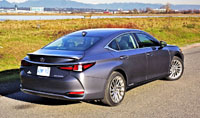
To be fair, the GS not only provides stronger performance, especially through curves but also off the line, and particularly in fully tuned GS F trim that’s good for 467 horsepower, but it feels more substantive overall due to 66 kg (145 lbs) of extra curb weight in base trim and 185 kg (408 lbs) of added heft as a hybrid, plus a rear wheel-drive architecture shared with the smaller IS series sedan and coupe, a more rigid, sport-tuned suspension design, and other enhancements justifying its significantly pricier window sticker.
On that note the 2019 Lexus GS ranges between $63,800 and just over $100,000, compared to only $45,000 to $61,500 for the ES (check out pricing for all new and past models right here at CarCostCanada, including trims, packages and separate options, plus find out about rebate information as well as dealer invoice pricing that could save you thousands).
Behind the big new ES grille is a 302 horsepower version of Lexus/Toyota’s well-proven 3.5-litre V6, those numbers down a mere 9 horsepower and 13 lb-ft of torque from the base GS engine, yet 34 hp and 19 lb-ft of torque more capable than the outgoing ES 350, while Lexus now joins it up to an eight-speed automatic transmission instead of the six-speed gearbox found in the 2018 ES 350 and this year’s pricier GS.
The ES 300h hybrid, which starts at $47,000, now gets an improved 176 horsepower 2.5-litre four-cylinder engine with 163 lb-ft of torque, plus a 67 horsepower (50 kW) electric motor and 29.1-kWh nickel-metal hydride (NiMH) battery, resulting in 215 net horsepower and an undisclosed amount of torque (the outgoing ES 300h’ net torque rating was 206 lb-ft). This fourth-generation Hybrid Synergy Drive system once again features a wonderfully smooth electronically controlled continuously variable transmission that works well in its luxury role, while minimizing fuel consumption.
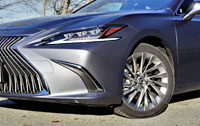
Fuel efficiency is the ES 300h’ strongpoint thanks to an amazing 5.5 L/100km city, 5.2 highway and 5.3 combined rating, which despite the aforementioned performance improvement makes last year’s 5.8, 6.1 and 5.9 respective ES 300h rating look merely so-so by comparison.
The 2019 ES 300h also does better than Lincoln’s MKZ Hybrid, the domestic luxury sedan only capable of 5.7 L/100km in the city, 6.2 on the highway and 5.9 combined, while some additional comparisons worth noting include the regular ES 350 that manages a respectable 10.6 in the city, 7.2 on the highway and 9.1 combined, the same car with its F Sport styling enhancements that’s capable of 10.9, 7.5 and 9.4, and the regular GS 350 AWD with its 12.3, 9.1 and 10.9 rating. Last year’s GS 450h hybrid managed a fairly decent 8.0 in the city, 6.9 on the highway and 7.5 combined, incidentally, but it’s no longer offered so this point is moot unless you can still source a new one or don’t mind living with a pre-owned version.
Finding a used GS might be a tad difficult being that they’re rare beasts. In fact, Lexus has only managed to deliver 82 examples in Canada up to August 31st of this year, compared to 1,445 ES units. This latter tally is actually the mid-size luxury sedan category’s second-best result, behind Mercedes’ E/CLS-Class, plus it’s also the segment’s best growth at 55.54 percent over the same initial eight months of 2018. Only two challengers saw any positive growth at all, including the same E/CLS-Class (that also includes a coupe and convertible) that saw its sales increase by 1.24 percent, plus the Audi A6 and A7 with 18.87 and 24.28 percent growth respectively, but these two models were only able to find 441 and 430 new buyers each so far this year.
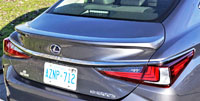
Just in case you were questioning, the GS (with sales down 43.84 percent) didn’t find itself in last place thanks to Jaguar’s XF having nosedived some 52.89 percent with just 57 deliveries, while Acura’s RLX did even worse with just 40 sales after a drop of 24.53 percent, and finally Infiniti’s Q70 only sliding down by 2.56 percent but nevertheless managing just 38 units down the road. Purely from a percentage perspective, the mid-size sedan segment’s biggest loser is Lincoln’s Continental that lost 56.88 percent over the same eight months, whereas the car that came closest to entering positive territory but narrowly missing out was the G80 from Hyundai’s new Genesis brand with a slip of just 0.44 percent (sales information sourced from GoodCarBadCar.net).
Such sales carnage in mind, it would be easy to forgive Lexus for eventually dropping the GS in favour of the ES, and while I’d personally be a bit glum after learning the brilliantly fun GS F was gone, I’d certainly support a CEO that chose to make good, sound business decisions over one simply wanting another super-fast sport sedan in the lineup. I know there’s a reasonably good case for having image cars in a brand’s fleet, but Lexus is already losing money with its sensational LC coupe, and that bit of low-slung eye-candy does a lot more to bolster Lexus’ brand image than a four-door sedan very few will ever see. So let’s pay attention to what Lexus does with these two models as we approach the upcoming decade.
One thing’s for certain, the ES will continue to fulfill its unique calling in the luxury marketplace for years to come, and on top of that will soon have fewer challengers. The previously noted Continental is slated for cancellation, as is Lincoln’s more directly competitive MKZ that’s also offered as a hybrid electric. Cadillac will soon drop its front-wheel drive XTS and CTS luxury four-door models, whereas deliveries of its newer CT6 sedan are so slow they hardly rate. The only rivals not yet mentioned include BMW’s 5 Series, Volvo’s newish S90, and Tesla’s aging Model S, while some in the ES’ market might also consider Buick’s LaCrosse (also to be discontinued soon), Chrysler’s 300 (likely to be phased out), and possibly the impressive Kia Stinger, plus big mainstream luxury sedans like Toyota’s own Avalon that shares underpinnings with the ES, and finally Nissan’s Maxima, which also gets close to premium levels of performance and quality without a pricier premium nameplate.
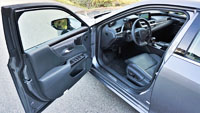
Just the same, the ES has sold in bigger numbers than most of these potential rivals despite its Lexus badge and often-pricier window sticker, and this brand new redesigned model should keep momentum up for many years to come. As mentioned before, the ES 350 and ES 300h hybrid are totally redesigned for 2019, and no matter whether it’s trimmed in base ES 350 form, enhanced with cooler ES 350 F Sport styling, or clothed in classy as-tested ES 300h togs, Lexus’ front-wheel drive four-door now provides a completely new level of visual drama to its exterior design.
Lexus’ trademark spindle grille is bigger and much more expressive, while its origami-inspired LED headlamp clusters are more complex with sharper edges. Its side profile is longer and sleeker too, with a more pronounced front overhang and a swoopier sweep to its C pillars that now taper downward over a shorter, taller rear deck lid. Its hind end styling is more aggressive too, thanks to a much larger crescent-shaped spoiler that hovers above big triangular wrap-around LED tail lamps.
The overall design plays with one’s mind, initially flowing smoothly from the front grille rearward, overtop the hood and down each sculpted side, before culminating into a clamour of dissonant creases, folds and cutlines at back. It all comes together well nevertheless, and certainly won’t cause anyone to utter the types of criticisms about yawn inducing styling that previous ES models endured.
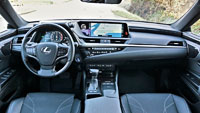
I could say the same about the new ES cabin, which instead of showing sharp edges now combines plenty of horizontal planes and softer angles with higher-grade materials than the outgoing model, not to mention a few design details pulled from the LFA supercar, such as the black knurled metal pods protruding from each side of the instrument hood, the left one for shutting off traction control, and the knob on the right for choosing Normal, Eco or Sport modes.
In between these unusual pods is a standard digital instrument cluster that once again finds inspiration in the LFA supercar, plus plenty of lesser Lexus models since. This one provides real-time energy monitoring via a nice flowing graphic just to the left of the speedometer, while the big infotainment display over to the right, on top of the centre stack, measures 8.0 inches at the least, up to 12.3 inches as-tested, yet both look larger thanks to all the black glass bordering each side. The left portion hides a classic LED-backlit analogue clock, carrying on a Lexus tradition I happen to love. The high-definition display includes stylish graphics and deep, rich contrasting colours, plus it responds to inputs quickly.
When choosing the as-tested ES 300h hybrid, the infotainment system now features standard Apple CarPlay, but I recommend integrating your smartphone to Lexus’ own Enform connectivity system. Enform is arguably more comprehensive and easier to use than the Android Auto interface my Samsung S9 is forced to use, although Android isn’t included anyway, while the list of standard Enform 2.0 apps includes fuel price updates, traffic incident details, and info on weather, sports, stocks, etcetera, while it’s also bundled with the Scout GPS Link navigation system, Slacker, Yelp, and more.

The new ES 300h also includes a new Remote Touch Interface trackpad controller on the lower console, which allows you to use smartphone/tablet-like gesture controls such as tap, pinch and swipe, and it works much better than previous versions, with more accurate responses, particularly when inputting via taps. Additional standard features include 17-inch alloy wheels, Bi-LED headlights, LED tail lamps, proximity keyless entry with pushbutton start/stop, a leather-wrapped steering wheel rim, rain-sensing windshield wipers, an auto-dimming centre mirror, a rearview camera with dynamic guidelines, a 10-speaker audio system with satellite radio, a deodorizing, dust and pollen filtered two-zone auto HVAC system, comfortable 10-way power-adjustable front seats with three-way heat and three-way forced cooling, NuLuxe breathable leatherette upholstery, all the usual active and passive safety equipment including 10 airbags, plus plenty more.
Speaking of standard safety, the new ES 300h includes Lexus Safety System+ 2.0 that boasts autonomous emergency braking with pedestrian and bicycle detection, lane departure alert with steering assist and road edge detection, new Lane Tracing Assist (LTA) automated lane guidance, auto high beams, and full-speed range adaptive cruise control.
The just-mentioned 12.3-inch infotainment display is part of an available $3,800 Premium package that also includes blind spot monitoring with rear cross-traffic alert, reverse tilting mirrors, front and rear parking sonar, a heated steering wheel rim (which along with the heatable front seats turns on automatically upon startup), front seat and side mirror memory, a navigation system with ultra-detailed mapping and accurate route guidance, plus Enform Destination Assist that includes 24/7 live assistance for finding destinations or points of interest.
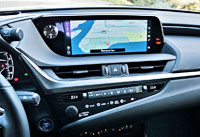
Alternatively, you may want to opt for the even more comprehensive $10,600 Luxury package that includes everything from the Premium package while adding 18-inch alloy wheels, extremely bright Tri-LED headlamps, an always appreciated wireless smartphone charger, leather upholstery, and a powered rear window sunshade.
Finally, the $14,500 Ultra Luxury package found on my tester combines everything in the Luxury package with a special set of 18-inch noise-reduction alloys, soft glowing ambient interior lighting, a really helpful 10-inch head-up display unit, an overhead surround-view parking camera system that makes parking a breeze, a fabulous sounding 17-speaker Mark Levinson premium audio system, softer semi-aniline leather upholstery, rear door sunshades, and a touch-free gesture control powered trunk lid.
This $61,500 ES 300h was the most luxuriously equipped version of this car I’ve ever tested, while along with its resplendent interior it totally stepped up its all-round performance as well. Like with previous generations its ride quality cannot be faulted, with this newest version actually improving thanks to revisions to its fully independent front strut and rear multi-link suspension system. Newly developed Dynamic Control Shocks now feature an auxiliary valve next to the main damper valve so as to respond more quickly to smaller movements. The front suspension was reworked too, aiding both comfort and stability, while rear trailing arm and stabilizer bar mounting point adjustments helped minimize body lean during hard cornering, all of which resulted in an ES that feels a lot more agile through tight, twisting corners.
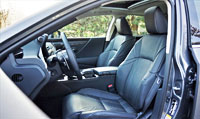
Yes, this latest ES 300h is actually a lot of fun to drive. Lexus even included a set of steering wheel paddles for swapping the continuously variable transmission’s simulated gears. It mimics the feel of real gears fairly well when set to Sport mode, while this edgier setting also increases torque at low speeds for better acceleration, and places a tachometer right in the middle of the digital gauge cluster. Owners concerned more about economical or environmental issues may prefer Eco mode, which helps to reduce fuel consumption and lower emissions, whereas EV mode allows the ES 300h to crawl silently through parking lots, slow moving traffic, and other low speed situations for short periods of time.
Another efficiency enhancer is new Auto Glide Control, which lets the ES to coast more freely upon throttle lift-off, instead of being slowed automatically via the automatic regenerative braking system.
No matter how fast or slow you’re traveling, the slippery ES is extremely quiet due to a doubling of structural adhesive, which improves NVH levels, while it also features sound-deadening front fender liners and underbody covers, plus insulation covering 93 percent of the new ES 300h’s floor pan, which is a significant increase when compared to the outgoing model’s 68 percent of floor pan coverage.
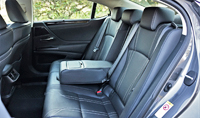
The previously noted battery, which is now positioned below the rear seat instead of the trunk, is smaller than the one used in last year’s hybrid, but impressively it’s more powerful. Its new location not only improves front/rear balance, but also allows for more cargo space. In fact, the ES 300h’ trunk is now identically sized to the conventionally powered ES 350 at 473 litres (16.7 cu ft). The redesign provides access for a centre pass-through too, which is large enough for skis or other long items, so therefore rear passengers can now enjoy the more comfortable outboard seats, which are incidentally even nicer than the previous model’s rear seats.
All interior finishings are better than the outgoing model’s appointments, by the way, with the improvements including higher quality soft synthetic surfacing, plus more of it. The lower door panels remain hard shell plastic, as do the sides of the centre console, but most everything else is soft to the touch. I like that Lexus positioned its wireless device charger below the armrest within the centre console bin, as my phone was less of a distraction.
Additionally, all switchgear has been improved over previous generations, with some notable details including those cool metal pods I mentioned earlier, which stick out each side of the instrument cluster, plus the tiny round metal buttons on the centre stack are nicely finished, these used for controlling the radio, media, and seek/track functions. The temperature control switches are particularly stylish and well made too, and, while not switchgear, the Mark Levinson-branded speaker grilles and surrounds on the upper door panels are really attractive as well. The hardwood trim feels real because it is, and comes in Striated Black, Linear Dark Mocha or Linear Espresso, while the metallic accents are nicely finished and not overdone.
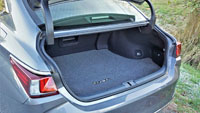
I’ve spent plenty of weeks behind the wheel of various Lexus ES generations over the past 20 years or so, in both conventionally powered and electrified forms, and now that I’ve spent yet another seven days with this entirely new 2019 ES 300h I can confidently predict that ES lovers will without doubt like this version best. It incorporates all the ES qualities you’ve grown to appreciate, yet steps up every aspect of quality, refinement and performance. Truly, this is one of the best entry-level luxury sedans I’ve ever tested.
Story credit: Trevor Hofmann
Photo credit: Karen Tuggay

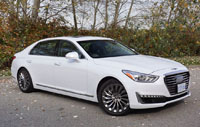
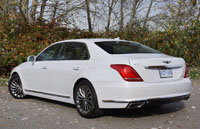
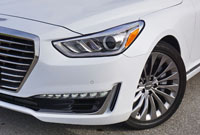
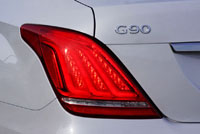
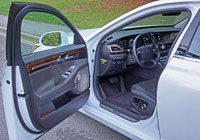
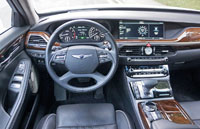
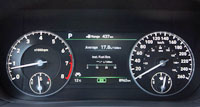
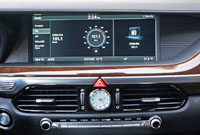
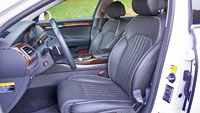
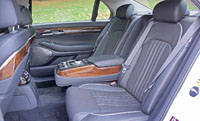
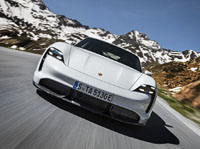
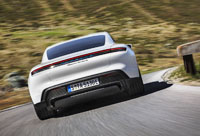
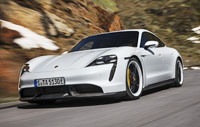
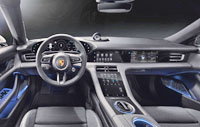
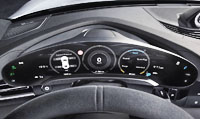
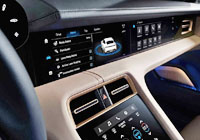
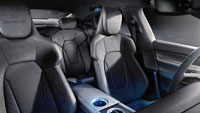
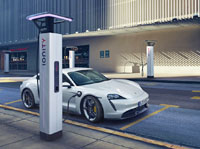
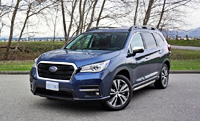
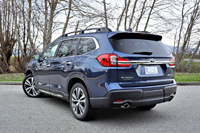
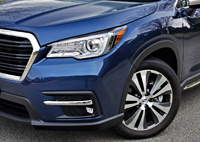
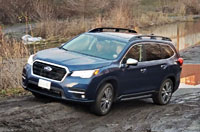
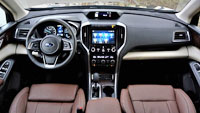

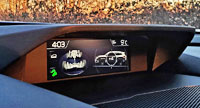
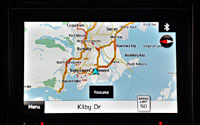
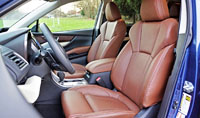
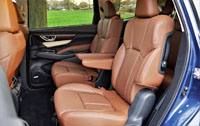
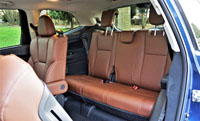
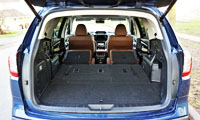
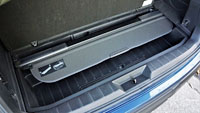
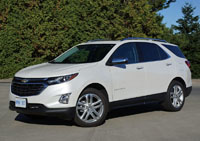
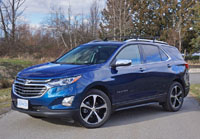
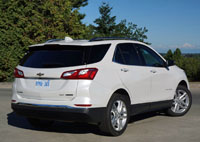
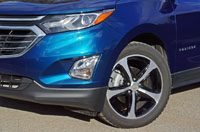
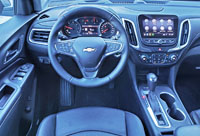
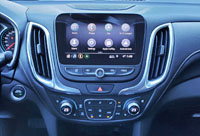
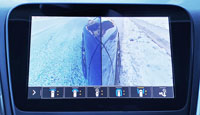
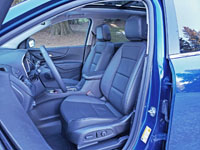
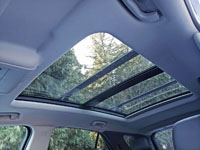
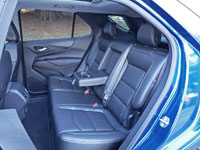
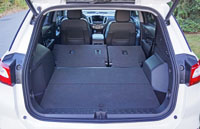
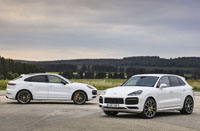
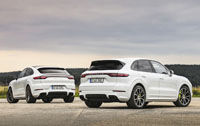
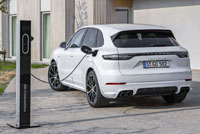
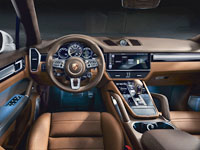
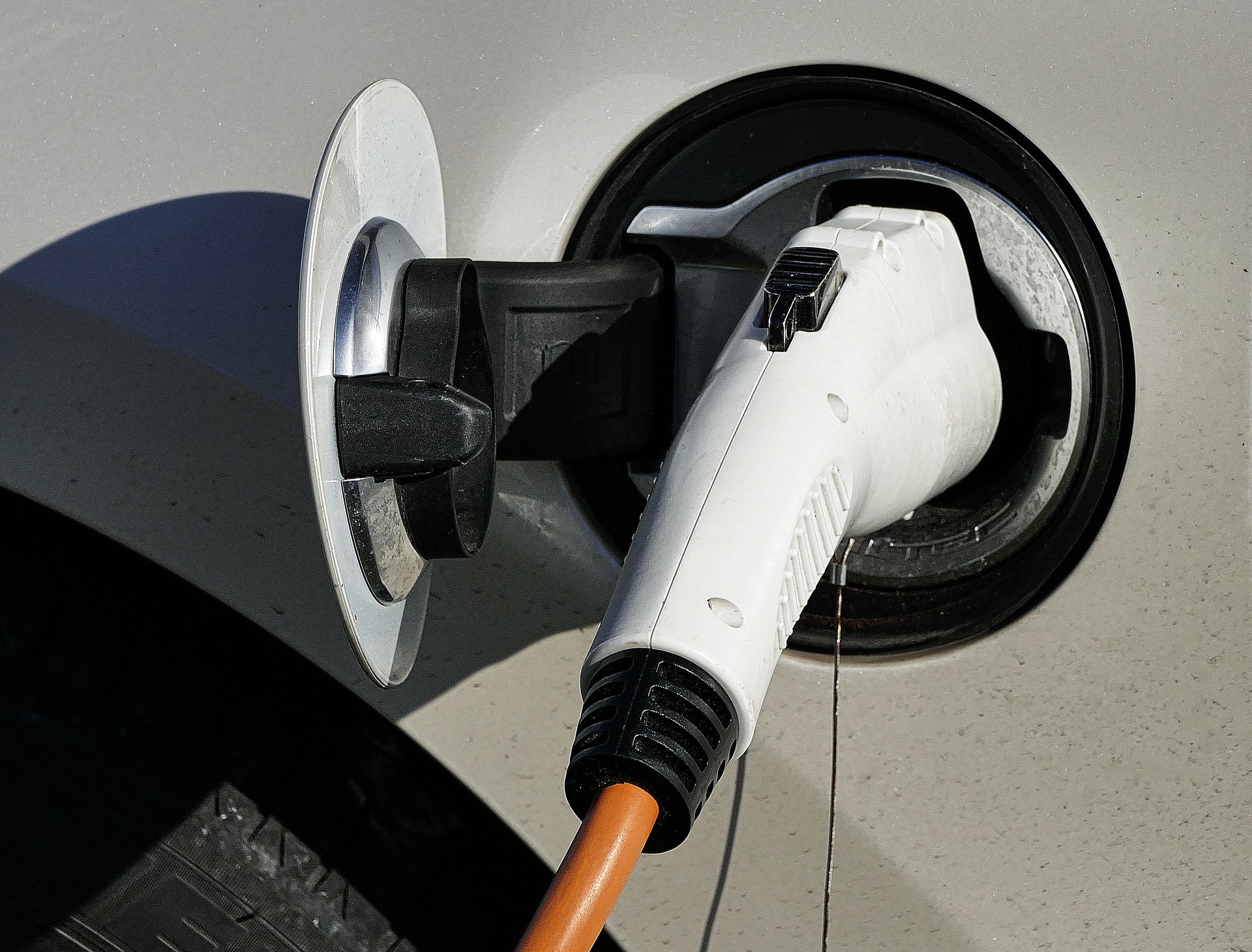 Electric Vehicles and Your Lifestyle:
Electric Vehicles and Your Lifestyle: How Much Money Can I Save With an Electric Vehicle?
How Much Money Can I Save With an Electric Vehicle? Will I Save Money Maintaining an Electric Vehicle?
Will I Save Money Maintaining an Electric Vehicle?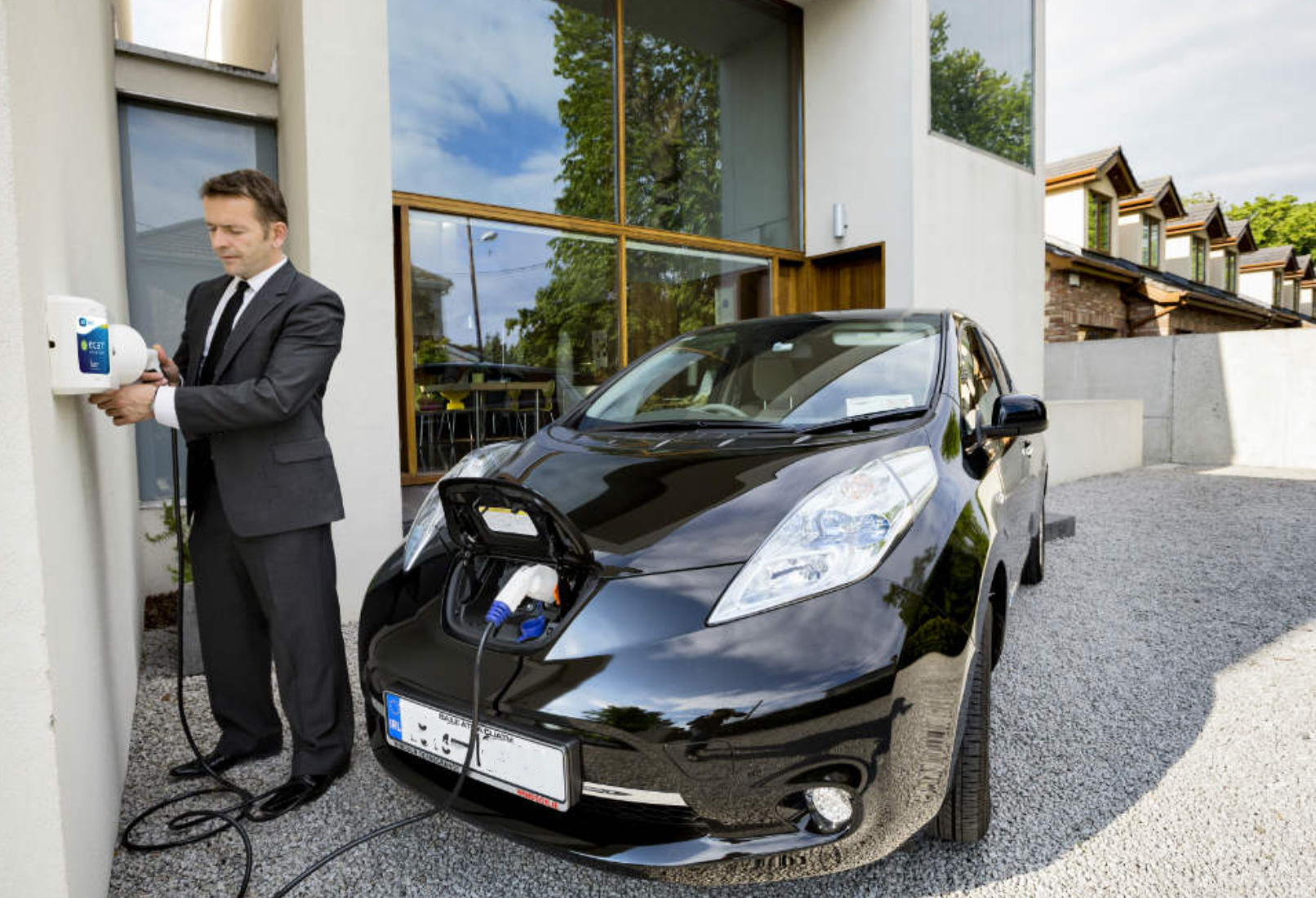 Where Will I Charge My Electric Car?
Where Will I Charge My Electric Car?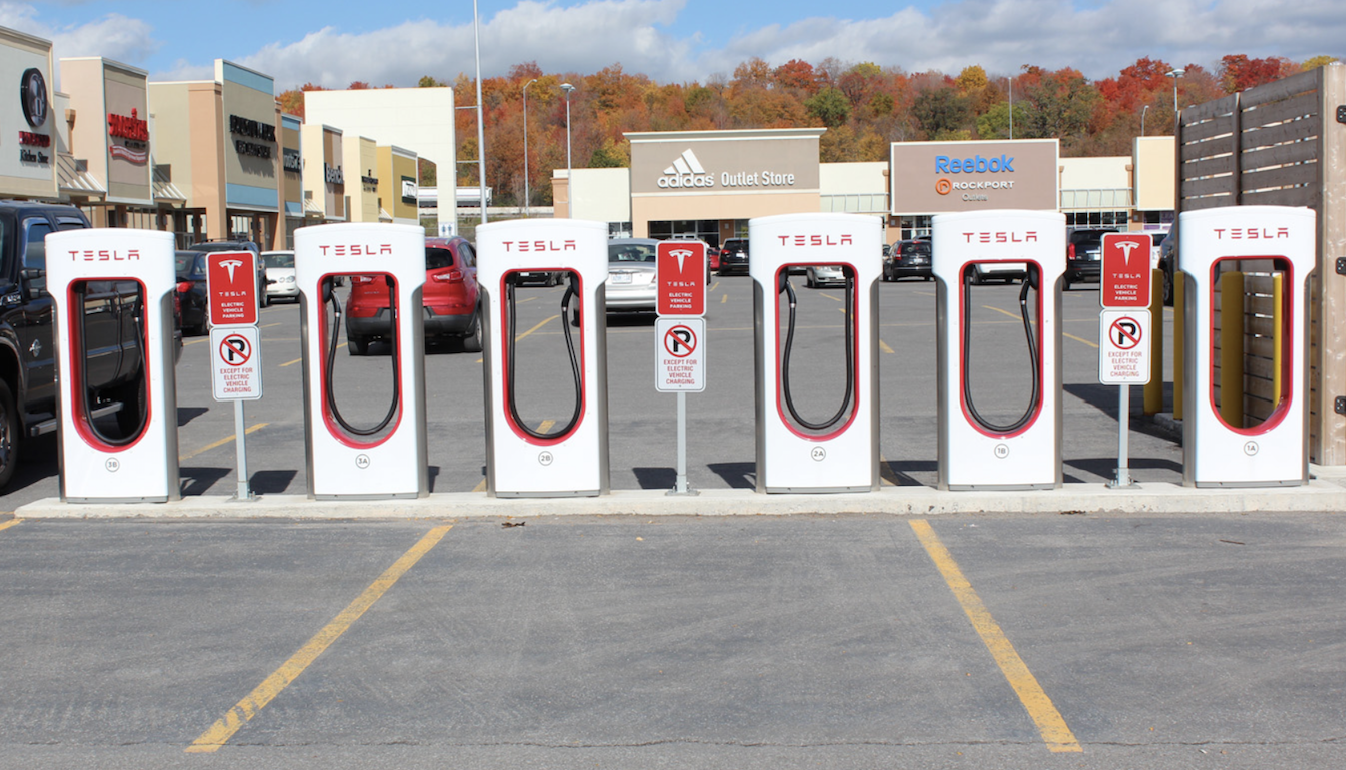 Although most electric vehicle owners do not drive more than 300 kilometres in a day, having a level 2 charging station in your home will add convenience and peace of mind. The ritual of visiting stations that sell gasoline or diesel fuel, may become a thing of the past.
Although most electric vehicle owners do not drive more than 300 kilometres in a day, having a level 2 charging station in your home will add convenience and peace of mind. The ritual of visiting stations that sell gasoline or diesel fuel, may become a thing of the past.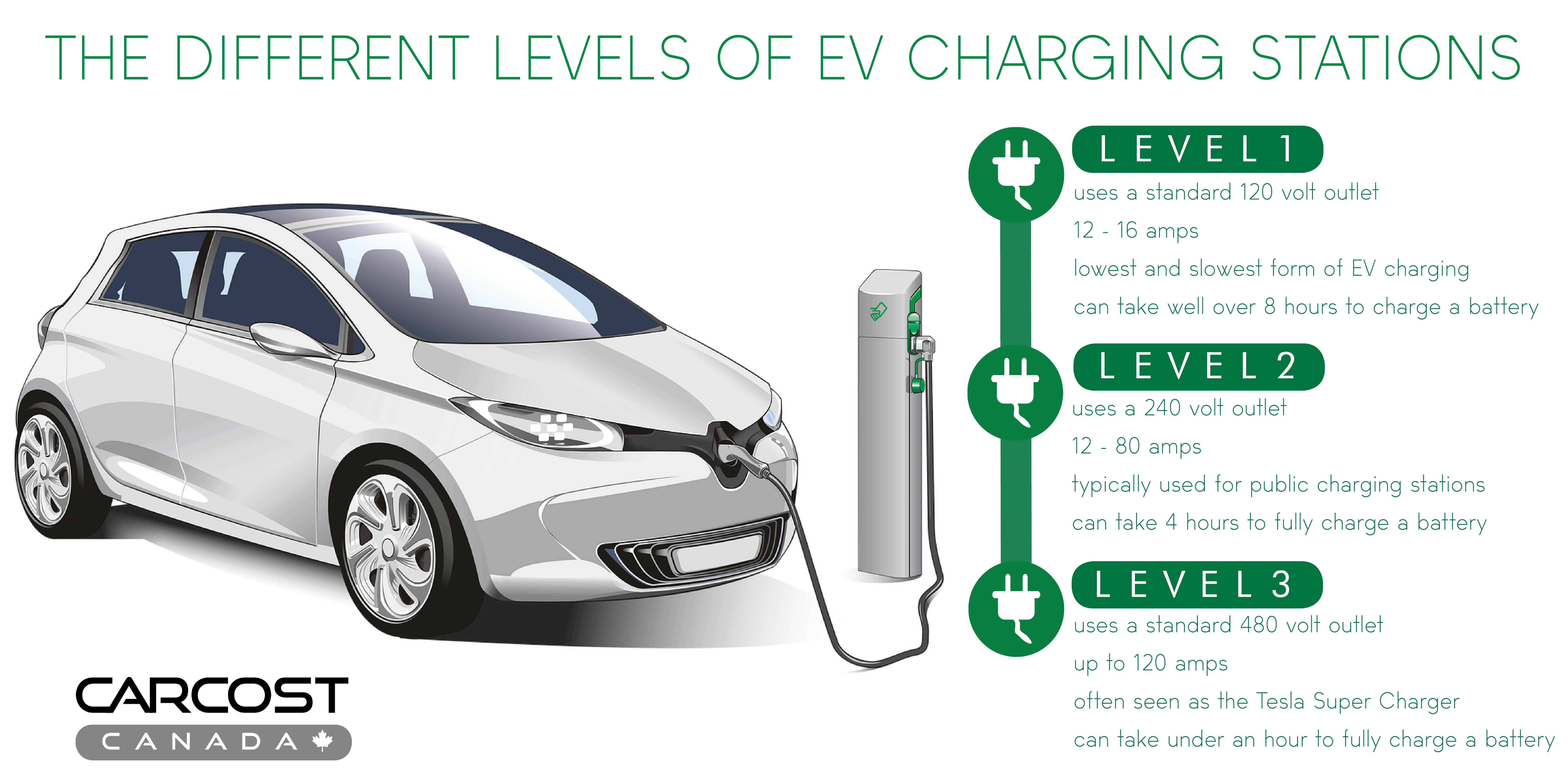
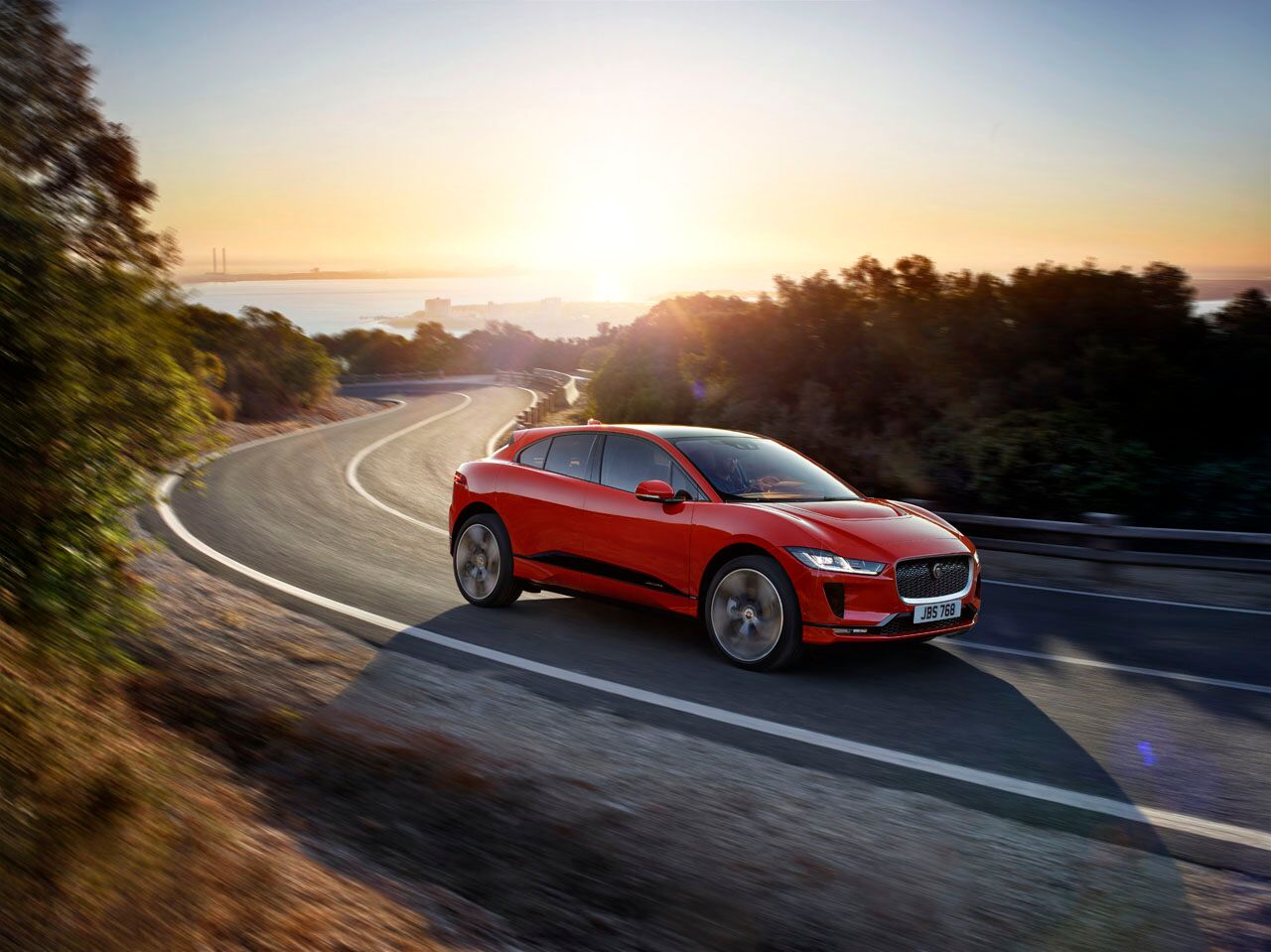 How Long is it Going to Take to Charge My Electric Vehicle?
How Long is it Going to Take to Charge My Electric Vehicle?